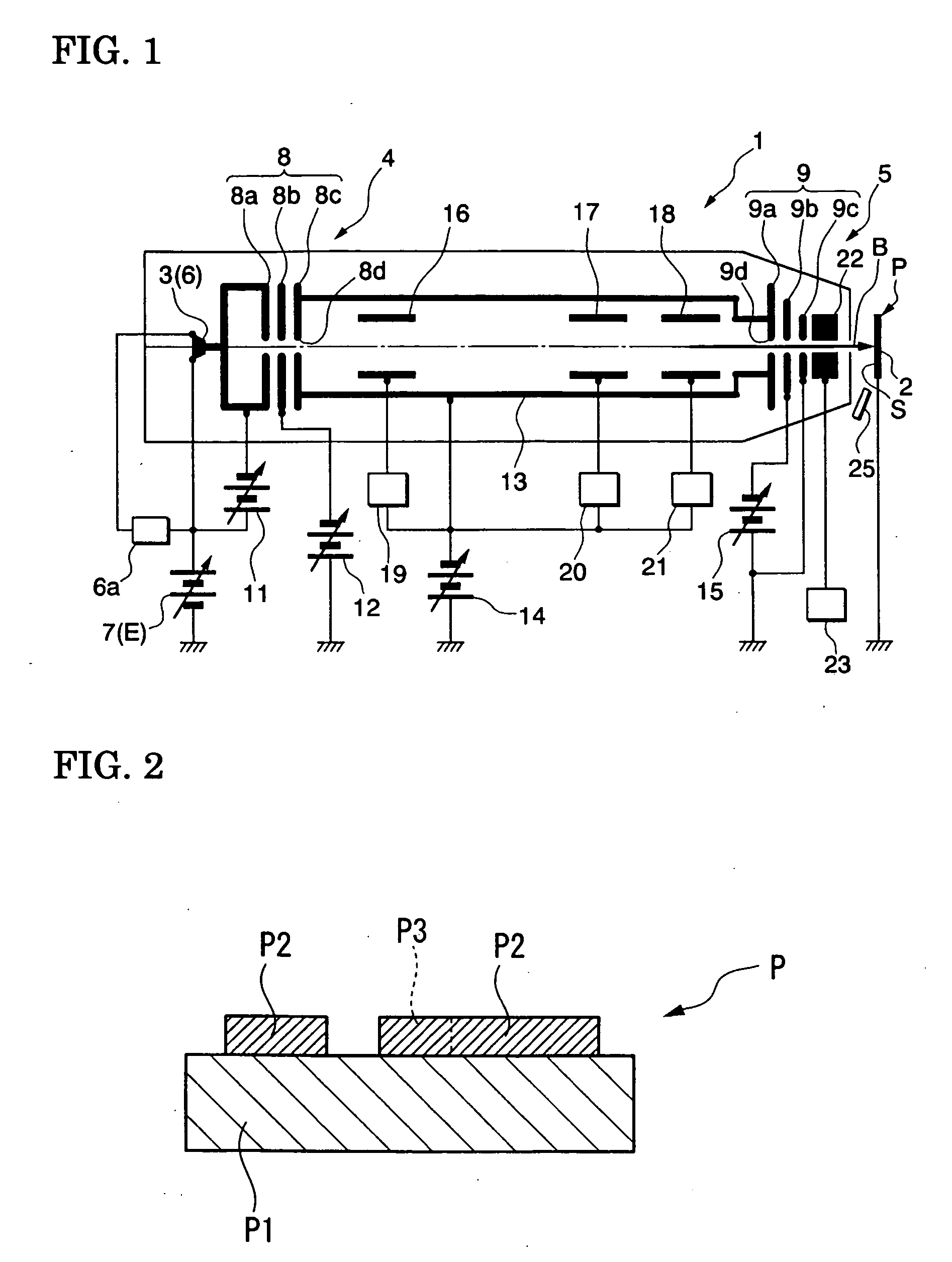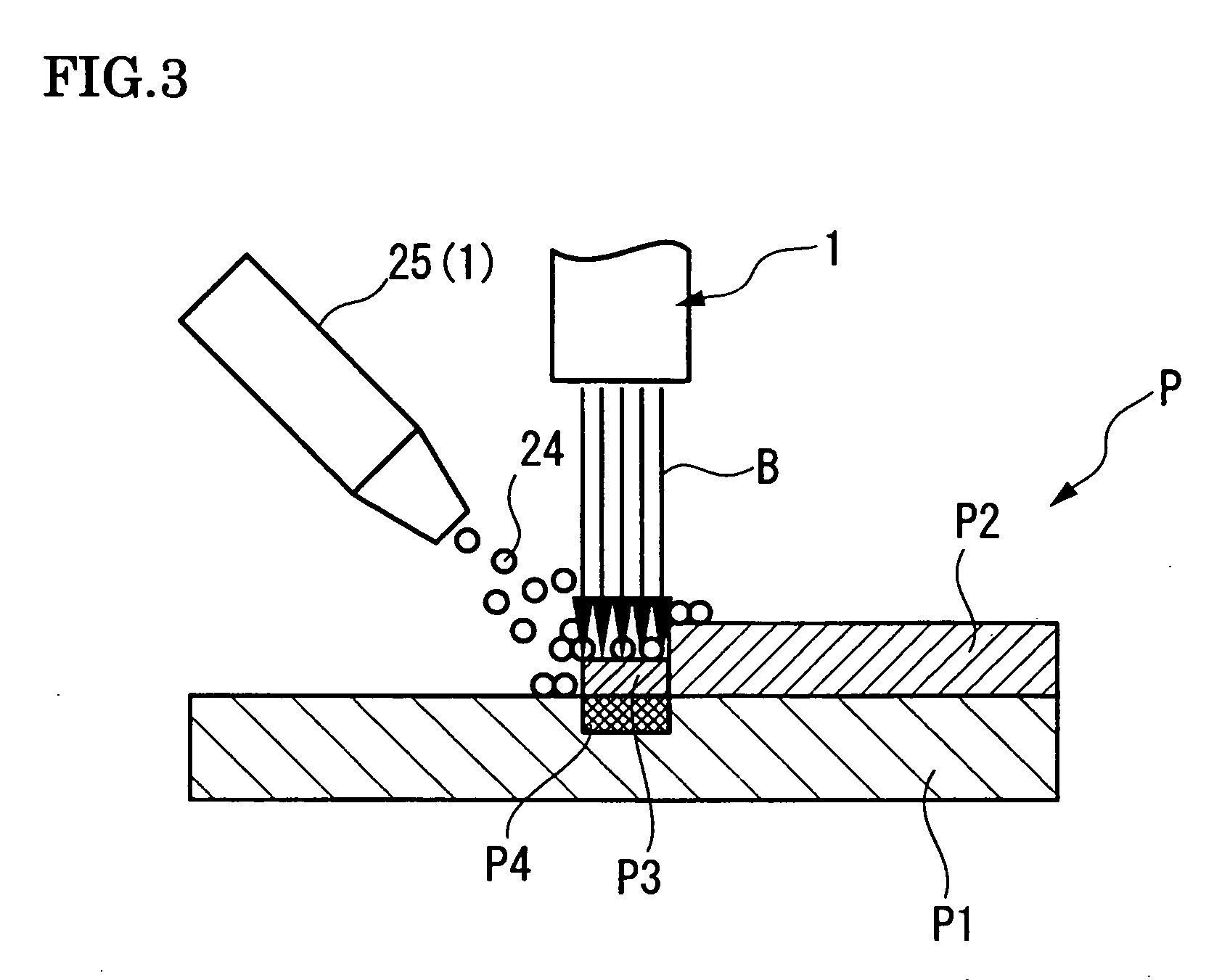Focused ion beam processing method
a processing method and focused ion beam technology, applied in the field of focused ion beam processing method, can solve the problems of reducing the intensity of applied laser light, irradiating objects such as transmissive photomasks, irradiation light transmittance, etc., to prevent the reduction of transmittance of the transmissive layer, reduce the damage to the workpiece, and reduce the effect of transmittan
- Summary
- Abstract
- Description
- Claims
- Application Information
AI Technical Summary
Benefits of technology
Problems solved by technology
Method used
Image
Examples
first embodiment
[0028] FIGS. 1 to 5 show a first embodiment according to the invention. FIG. 1 shows the configuration of a focused ion beam apparatus. FIG. 2 is a cross-sectional view of a transmissive photomask. FIG. 3 explains how the transmissive photomask is irradiated with the ion beam from the focused ion beam apparatus. FIG. 4 shows graphs illustrating the relationship between the depth of a damaged portion of a workpiece and the concentration of ions when the workpiece is irradiated with ion beams with various energy levels. FIG. 5 shows graphs illustrating the relationship between the energy level of ion beam irradiation and the post-irradiation transmittance of the transmissive photomask before and after a washing process.
[0029] As shown in FIG. 1, the focused ion beam apparatus 1 includes a workpiece mount 2 on which a transmissive photomask P, which is a workpiece, is mounted, an ion supply 3 that supplies an ion beam B with which the surface S of the transmissive photomask P is irrad...
second embodiment
[0039]FIG. 6 shows a second embodiment according to the invention and is a cross-sectional view of a reflective mask. In this embodiment, members common to those used in the above embodiment have the same characters and the description thereof will be omitted.
[0040] As shown in FIG. 6, the reflective mask Q includes a reflective layer Q1 that reflects irradiation laser light (irradiation light), an interference layer Q2 formed on the reflective layer Q1, and an absorption layer Q3 that is patterned on the interference layer Q2 and absorbs the irradiation laser light. More specifically, the reflective layer Q1 is a stacked structure of a plurality of layers made of silicon and a plurality of layers made of molybdenum. The interference layer Q2 is made of, for example, chromium. The absorption layer Q3 is made of, for example, a tantalum-based compound.
[0041] In such a reflective mask Q, the repair location Q4 (process position) of the patterned absorption layer Q3 can also be irrad...
PUM
 Login to View More
Login to View More Abstract
Description
Claims
Application Information
 Login to View More
Login to View More - R&D
- Intellectual Property
- Life Sciences
- Materials
- Tech Scout
- Unparalleled Data Quality
- Higher Quality Content
- 60% Fewer Hallucinations
Browse by: Latest US Patents, China's latest patents, Technical Efficacy Thesaurus, Application Domain, Technology Topic, Popular Technical Reports.
© 2025 PatSnap. All rights reserved.Legal|Privacy policy|Modern Slavery Act Transparency Statement|Sitemap|About US| Contact US: help@patsnap.com



